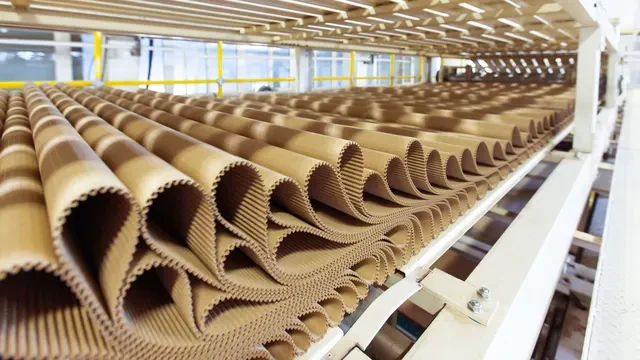Box production plays a key role in logistics and transportation, ensuring the safe movement and storage of products. In recent years, advancements in the materials and technologies used in box production have led to significant changes, enhancing both environmental sustainability and cost efficiency. This article will delve into the materials used in box production and explore technological innovations, examining how these changes impact the industry.
Different materials are used in box production, each serving specific purposes. These materials must ensure the safe transportation and storage of products while also being environmentally friendly. Here are the most commonly used materials in box production:
1.1. Cardboard
Cardboard is the most commonly used material in box production. It is lightweight and durable, making it suitable for transporting a wide variety of products. Cardboard is often preferred in the e-commerce sector and for retail product packaging. Its recyclability offers significant environmental benefits.
1.2. Corrugated Board
Corrugated board is a thicker and stronger type of cardboard. It is used for transporting heavy or fragile products, providing a more robust structure and resistance to impacts. Corrugated board is often preferred for transporting large or fragile items like machinery or electronic goods.
1.3. Kraft Paper
Kraft paper, made from natural fibers, is an eco-friendly material. It is commonly used by organic products and environmentally conscious brands. Additionally, this material has a high recycling rate, making it a preferred choice for sustainable packaging solutions.
1.4. Recycled Materials
In recent years, the use of recycled materials has increased. These materials are preferred by manufacturers for being both eco-friendly and cost-effective. Recycled cardboard and corrugated board can offer the same quality as new materials but require less energy and resources during production.
Rapid advancements in technology have significantly impacted box production. These innovations have made production processes more efficient, faster, and environmentally friendly. Here are some key technological changes:
2.1. Digital Printing Technologies
Digital printing has revolutionized box design. This technology allows manufacturers to create faster and more customized designs. With digital printing, small production runs can be made at a low cost, enabling small businesses and personal brands to compete. Moreover, the higher color accuracy and detail levels make for aesthetically appealing boxes.
2.2. Automated Production Lines
Automation plays a crucial role in box production. Automated production lines speed up the manufacturing process while minimizing human errors. These technologies make box production faster and more efficient. Additionally, they reduce labor costs, allowing manufacturers to take advantage of economies of scale by producing large quantities of products.
2.3. Smart Packaging Systems
Smart packaging technologies have rapidly gained popularity in box production. These systems use RFID (Radio Frequency Identification) tags and sensors to track the contents of boxes and enhance traceability. This allows for the digital recording of every step during transportation, minimizing the risk of product loss or damage. Furthermore, these technologies promote environmental sustainability by optimizing the transportation and storage process.
2.4. Eco-friendly Material Use
The use of eco-friendly materials has become more widespread in line with increasing environmental awareness. Biodegradable, recyclable, and sustainable materials used in box production help brands showcase their environmental responsibility. These materials reduce the carbon footprint and do not harm the environment.
2.5. 3D Printers for Prototype Production
3D printers play an important role in box design and prototype production. This technology allows designers to quickly prototype and test new box models. Moreover, it enables customized box production for low-volume manufacturing needs. 3D printing provides box manufacturers with greater flexibility.
Technological innovations provide many benefits in box production:
Faster Production Process: Automation and digital printing technologies speed up production, making it more efficient.
Cost Savings: Faster production and the use of recycled materials help reduce costs.
Environmentally Friendly Production: The use of eco-friendly materials and recycled cardboard minimizes negative environmental impacts.
Customized Designs: Digital printing enables the creation of personalized designs, helping brands stand out.
Safer Transportation: Smart packaging and traceability systems make it easier to ensure product security during transportation.
The materials used in box production and technological innovations play a vital role in enhancing industry efficiency and providing sustainable solutions. New technologies have made box production faster, safer, and more environmentally friendly. Additionally, technologies like digital printing and automation help lower costs while improving customer experiences.
By adopting advanced technologies and using eco-friendly materials, businesses can control costs and contribute to sustainable production processes. These innovations in box production will make the logistics and transportation sector more efficient and environmentally conscious in the future.
Keywords: box production, box materials, technological innovations, digital printing, automated production lines, eco-friendly packaging, recycled materials, 3D printing, smart packaging.
